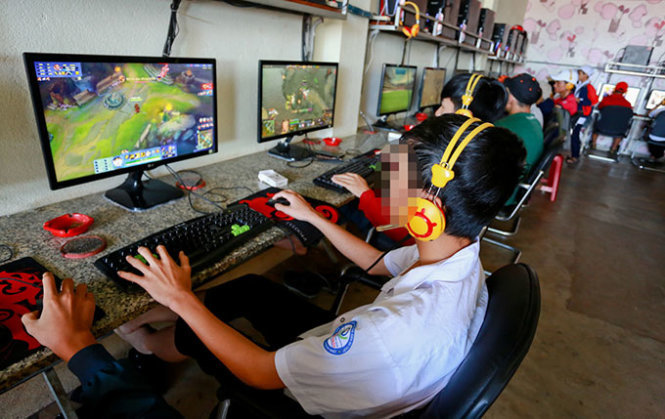Sluggish Internet connectivity caused by problems with cross-sea cable systems has become a regular annoyance in Vietnam, and users are running out of patience.
At 7:20 am on Thursday, the Asia America Gateway (AAG) cable network suffered a problem at its landing point in Hong Kong, signaling another period of slow connection speeds for Internet users in Vietnam.
The 20,000-kilometer system provides one of Vietnam’s lifeline Internet gateways to the world by linking it with other Southeast Asian countries and with the U.S. across the Pacific Ocean.
Thursday’s problem was by no means the first experienced by the AAG, which has one of the largest capacities out of those that Vietnam is connected to.
Since its launch in 2009, the AAG has experienced repeated problems, with two ruptures in 2014 and four cable cuts in 2015.
Vietnam’s Internet was also impeded between March 3 and 18 last year because of a power leak, according to local tech news website ICTNews.
As many as four separate problems have been reported with the AAG so far in 2017.
AAG and other submarine cable systems, including the Asia Pacific Gateway (APG), Intra Asia (IA) and South-East Asia - Middle East - Western Europe 3 (SMW-3) cables, are responsible for 90 percent of Vietnam’s international connections.
The APG system, which had been expected to be a reliable alternative to the AAG when it was put into use late last year, turned out to be a disappointment after a rupture was reported in June along a section connecting the central city of Da Nang with the U.S., Japan and Hong Kong.
In a rare incident in August, all three submarine communications cables crucial to Vietnam’s international connectivity – IA, SMW-3 and AAG – came down with problems simultaneously, causing global connection from Vietnam to be slowed for over a month.
The root of the problem
According to Nguyen Manh Hung, chairman of Vietnam National Posts and Telecommunications Group (VNPT), recent problems with Internet cables are not to be blamed on faulty designs but rather on their locations.
As most of these cables make their landing points in Hong Kong or Singapore, they can be subject to constant disturbance caused by large vessels that frequent the busy ports, leading to ruptures, Hung explained.
Other possible explanations for repeated issues include anchors dropped by ships out at sea and natural geological fractures, he added.
“As for the AAG system, the developer must take some responsibility for not having conducted careful enough surveys of the network map to allow such problems to recur so frequently,” one leader of an Internet provider in Vietnam said on condition of anonymity.
|
HUYNH THANH PHI (marketing expert): I find it unacceptable that Internet providers simply announce a “cable cut” and tell their customers to wait for it to get fixed without taking further responsibility. “Cable cut” has too often been used as force majeure that exempts providers from responsibility for intolerably sluggish connection speeds. As a user, I doubt this line of reasoning is still valid with the growing number of such incidents. Internet carriers in Vietnam need to demonstrate more clearly their duty as a service provider, rather than act simply as a messenger to make announcements of “force majeure”! |
Like us on Facebook or follow us on Twitter to get the latest news about Vietnam!






















































